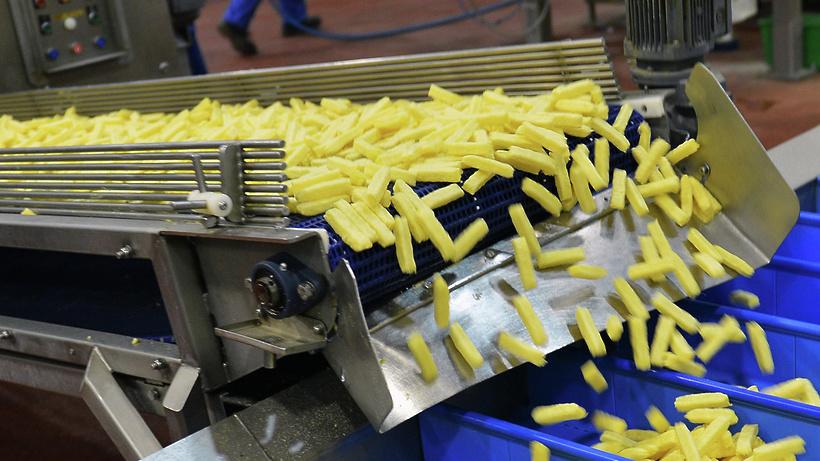French fries, also known as chips, are one of the most popular side dishes consumed all over the world. Whether it's a burger or pizza, fries seamlessly complement almost any meal. With the rapid growth of fast food chains globally, the demand for fries has exploded. To keep up with this demand and ensure consistency in taste and quality, the food processing industry has developed highly automated fries making machines. In this article, we discuss the various types of French Fries Processing Machines and how they have streamlined fries production.
Potato Pre-Processing
The first step in fries production involves preparing the raw potatoes. Farmers grow specific varieties of potatoes that are ideal for frying. These varieties have high starch content which leads to crispiness when fried. The potatoes are manually sorted based on size and quality. Any defective or bruised potatoes are removed.
The sorted potatoes then undergo pre-processing which involves operations like peeling, cutting and washing. Some key pre-processing equipment used are:
- Peelers: These machines quickly peel the skin off the potatoes using abrasive rollers or blades. This removes any dirt or impurities from the surface.
- Cutters: Cutters are used to slice the peeled potatoes into different shapes and sizes. Chips, wedges and curly fries require different cutting attachments. Advanced cutters can precisely cut thousands of fries within minutes.
- Washers: Industrial washers thoroughly wash the cut potatoes to remove any remaining dirt or bacteria. Clean fries are essential for food safety.
- Storage Silos: Pre-processed potatoes are moved into large silos for temporary storage and distribution to fryers. Modern silos are equipped with temperature and humidity controls.
Frying
After pre-processing, the fries enter the main frying stage. Commercial fryers are specially designed for mass frying of potatoes:
- Oil bath fryers: In these fryers, cut potatoes are slowly immersed in vats of hot oil (180°C-190°C typically) and fried for 2-3 minutes until lightly golden brown.
- Air impingement fryers: Here, oil-coated fries are blasted with streams of hot air to achieve an extra-crispy exterior without being fully submerged in oil. This reduces oil absorption.
- Vacuum fryers: These innovative fryers fry at much lower temperatures (120°C-150°C) under vacuum pressure. This seals in moisture while achieving an excellent crust. Less oil is used compared to conventional fryers.
Advanced fryers constantly stir the fries electronically to ensure even cooking. Digital timers and thermometers monitor frying time and oil temperature. Properly fried fries achieve a balance of crispiness and fluffiness within.
Finishing
After frying, the hot oil is drained off the fries using vibrating mesh belts or centrifugal dryers. Excess oil is sometimes partially removed through this process to reduce fat content.
The hot fries are then quickly moved to seasoning belts. Seasonings like salt and spices are automatically sprayed or dusted onto the fries using nozzles as they move continuously. This locks in flavor.
Final quality checks are performed using cameras linked to computers. Any below-par fries are automatically rejected through air impulses before packaging. High-quality fries then travel through advanced packaging lines for preparation of single-serve or larger portions. Packaging ranges from paper bags to cartons.
Some key finishing equipment used are:
- Seasoning Belts: Vibrating belts ensure uniform seasoning coating
- Cameras: Used for real-time defect detection
- Packers: Fully-automated machines that rapidly package fries
- Sealers: Sealed packs are more sustainable than open bags
- Pallet wrappers: Wraps packed fries for secure transport
Process Automation and Quality Control
Fully automated control systems maintain precision and quality consistency throughout fries processing. Components like weighers, scanners and metal detectors constantly monitor critical parameters like weight, size, moisture level and presence of foreign objects in fries.
Data from sensors is fed to Programmable Logic Controllers which automatically adjust machine settings like conveyor speeds, oil temperatures and seasoning amounts to minimize variations. Advanced machine vision also identifies and removes any under-sized, over-sized or misshapen fries from the production line before packaging.
Real-time process data collection occurs using Industrial Internet of Things (IIoT) enabled sensors. Cloud-based analytics of this big data helps operators troubleshoot issues, track equipment performance over time and optimize recipes. Traceability of raw materials and end products is also improved through electronic record-keeping.
Impact and Future Scope
With their high levels of automation and control, food processing equipment have enabled fast food chains to mass produce consistently high volumes of quality fries at low operational costs. Regional fry shops now have franchise expansion opportunities using standardized recipes and infrastructure. Customers receive a predictable eating experience no matter the outlet's location.
Ongoing research works on developing healthier low-fat and low-calorie frying methods through techniques like oven-baking. Microwave and infrared heating show promise. Biodegradable packaging solutions are also being commercialized. Integrating renewable energy sources can make fries processing more environmentally-sustainable. Going forward, advanced robotics, predictive maintenance through IoT integrations, and alternative protein frying methods will further transform this integral snack food production process.
French fries processing machines have revolutionized the fast food industry. Through automation and control systems, they overcome manual inconsistencies and bottlenecks to reliably mass produce appetizing, restaurant-quality fries at an industrial scale. With ongoing technological innovations, these fries manufacturing facilities will keep satisfying the world's never-ending appetite and craving for the golden brown delights known to all as French fries for many years to come.
For more details on the report, Read- https://www.rapidwebwire.com/french-fries-processing-machine-growth-market-size-share-analysis/
Get more insights on this topic: https://masstamilan.tv/automotive-tire-pressure-monitoring-system-revolutionizing-vehicle-safety/



